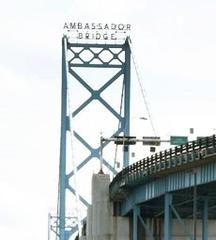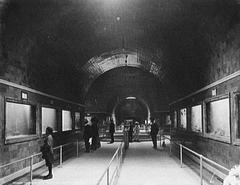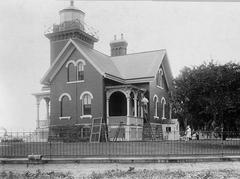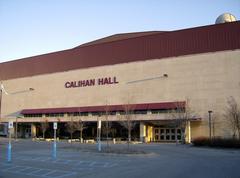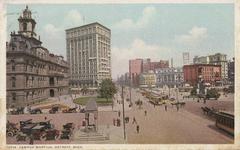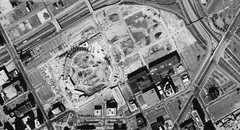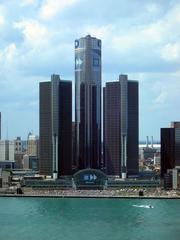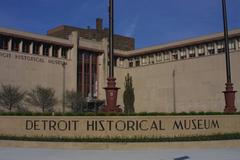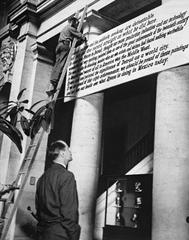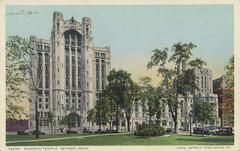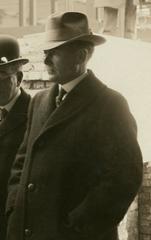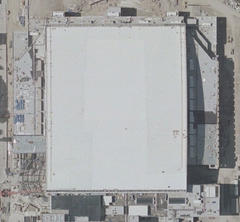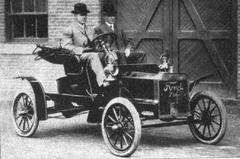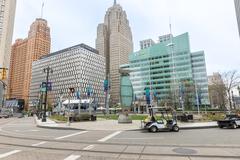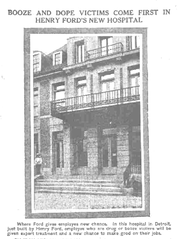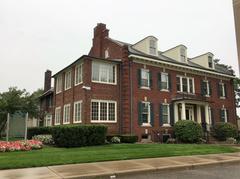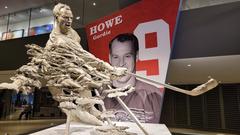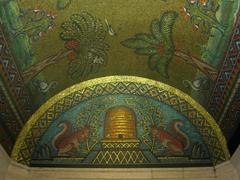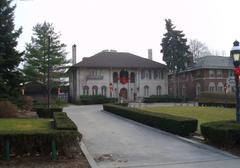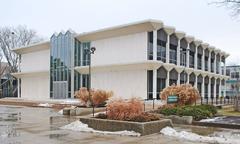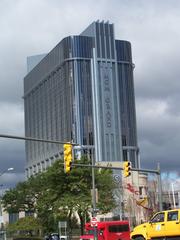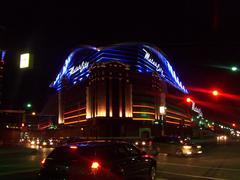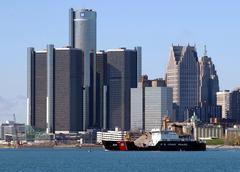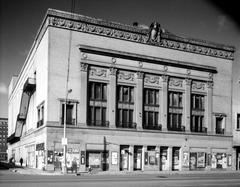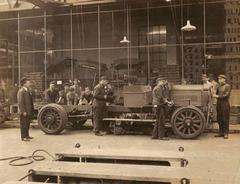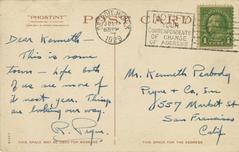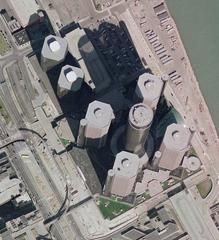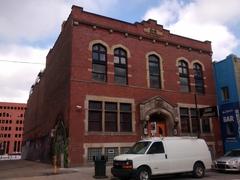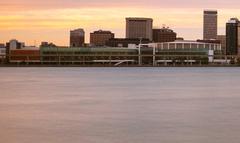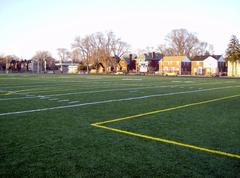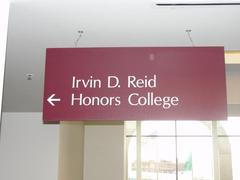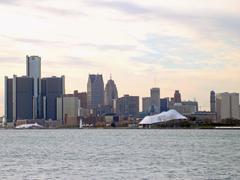Detroit Receiving Hospital Visiting Hours, History, and Visitor Guide
Date: 04/07/2025
Introduction
Detroit Receiving Hospital (DRH) is a cornerstone of Detroit’s healthcare system and stands as a significant landmark in both medical and architectural history. Established in 1915, DRH is Michigan’s first American College of Surgeons-verified Level I Trauma Center, renowned for its leadership in trauma and emergency medicine. The hospital’s evolution mirrors Detroit’s growth, from its original downtown facility to its current modernized campus in Midtown. Designed by architect William Kessler, DRH is not only a center for urgent medical care but also a hub for medical education, research, and community outreach, with affiliations to the Detroit Medical Center (DMC), Wayne State University School of Medicine, and Michigan State University College of Osteopathic Medicine.
This guide provides comprehensive information for visitors, including historical context, visiting hours, accessibility, safety tips, and nearby attractions, ensuring an informed and meaningful visit. For the most up-to-date information, always consult the official DRH and DMC websites (Detroit Receiving Hospital Official Website, Detroit Medical Center).
Table of Contents
- Historical Overview and Significance
- Visiting Detroit Receiving Hospital
- Frequently Asked Questions (FAQ)
- Visual and Media Resources
- Useful Links and References
- Conclusion
Historical Overview and Significance
Founding and Early Development
Founded in 1915, Detroit Receiving Hospital was created to address the urgent health needs of Detroit’s rapidly expanding industrial population. The hospital quickly became an essential provider of trauma care, emergency services, and public health initiatives.
Role within the Detroit Medical Center
Since 1985, DRH has been part of the Detroit Medical Center (DMC), a collaborative network of hospitals in southeast Michigan. As a member of the DMC, DRH benefits from shared resources, advanced technology, and a robust academic environment, supported by over 2,000 licensed beds, 3,000 affiliated physicians, and more than 12,000 employees.
Modernization and Architectural Significance
In 1980, DRH relocated to its current Midtown Detroit campus as part of a significant modernization initiative. The hospital’s contemporary design, led by William Kessler, is celebrated for its modernist architecture and integration of natural light. The hospital also houses the largest hospital-based art collection in the United States, with over 800 pieces displayed throughout its public spaces.
Academic and Research Impact
DRH serves as a primary teaching hospital for Wayne State University School of Medicine and maintains a strong affiliation with Michigan State University College of Osteopathic Medicine. It provides hands-on training for medical students and residents and supports research that drives innovation in trauma care and public health.
Community Contributions
The hospital is deeply committed to serving Detroit’s diverse communities and acts as a safety net for underserved populations. DRH runs outreach programs addressing infectious disease, violence prevention, substance abuse, and health education, helping to reduce disparities in healthcare.
Recognition and Achievements
DRH and the DMC network have received numerous awards for quality care and innovation, including recognition among the “100 Most Wired Hospitals and Health Systems” and national rankings for heart failure outcomes and infrastructure excellence.
Visiting Detroit Receiving Hospital
Location and Accessibility
- Address: 4201 St. Antoine Street, Detroit, MI 48201
- Area: Midtown Detroit, near major cultural attractions like the Detroit Institute of Arts and Eastern Market
- Access: Easily reachable by car, public transit, and ride-sharing. Wayfinding maps and signage are available on campus.
- Parking: Multiple parking decks and lots are available, with designated visitor spaces and ADA-accessible options.
Visiting Hours
- General Visiting Hours: 10:00 AM – 8:00 PM daily.
- Special Units: ICU and specialized departments may have restricted hours; confirm by calling ahead or checking the DRH official website.
- Emergency Department: Open 24/7 for emergency care (not general visitation).
Admission and Tours
- Admission: No tickets or fees are required to visit patients or public areas.
- Tours: DRH does not offer routine public tours due to its operational role as a trauma center. Educational tours or historical presentations can occasionally be arranged through the hospital’s public relations office or the Wayne State University School of Medicine (Wayne State University School of Medicine).
- Art and History: Visitors may view the hospital’s public art collection and select historical exhibits in common areas.
Safety and Visitor Etiquette
- Midtown Detroit is generally safe and visitor-friendly, but standard urban precautions are advised.
- The hospital is a non-smoking campus and maintains strict policies on patient privacy and infection control.
- Visitors should remain in designated public areas unless accompanied by staff.
- Personal belongings should be secured, and visitors are encouraged to use well-lit walkways, especially after dark.
Accessibility Services
- DRH is fully ADA-compliant, offering wheelchair access, elevators, and accessible restrooms.
- Guest services are available for those needing additional assistance; advance notice is recommended for special accommodations.
Amenities and Dining Options
- Free Wi-Fi is available throughout the campus.
- Cafeterias and vending machines offer food and beverages. Complimentary coffee and tea may be provided in some waiting areas.
- Midtown Detroit boasts a range of nearby restaurants, cafes, and hotels.
Recommended Photo Opportunities
- Exterior Architecture: Capture the modernist hospital façade and DRH’s main entrance.
- Art Installations: Public spaces feature sculptures and murals.
- Nearby Sites: The Detroit Institute of Arts, Eastern Market murals, and Dequindre Cut provide additional photographic interest.
- Note: Photography inside clinical areas is restricted to protect patient privacy.
Frequently Asked Questions (FAQ)
Q: What are Detroit Receiving Hospital’s visiting hours?
A: General hours are 10:00 AM – 8:00 PM, but specific units may differ. Always confirm before visiting.
Q: Is there a fee or ticket required to visit the hospital?
A: No, visits to patients or public spaces are free. No tickets are necessary.
Q: Are public tours available?
A: Regular public tours are not offered. Educational or historical tours may be arranged by special request.
Q: How do I access the hospital using public transportation?
A: Several Detroit public transit routes serve Midtown and the DMC campus; consult the Detroit Department of Transportation for schedules.
Q: Is parking available?
A: Yes, there are multiple visitor parking decks and lots on the DMC campus.
Q: Is the hospital accessible for people with disabilities?
A: DRH meets ADA standards, with accessible entrances, elevators, and restrooms.
Visual and Media Resources
- Explore photos and virtual tours on the Detroit Medical Center website.
- Images are available with descriptive alt tags such as “Detroit Receiving Hospital Midtown entrance” and “DMC campus aerial view.”
Useful Links and References
- Detroit Receiving Hospital Official Website
- Detroit Medical Center
- Wayne State University School of Medicine
- Detroit Institute of Arts
- Detroit Department of Transportation
- Visit Detroit – Official Tourism Site
- Murals in the Market
- Detroit Historical Society
- Discover Detroit Receiving Hospital: A Historical Landmark and Medical Institution in Detroit, 2025, Wayne State University School of Medicine
- Detroit Historical Monument Official Website
Conclusion
Detroit Receiving Hospital embodies Detroit’s resilience, innovation, and dedication to community health. As a historic trauma center and an architectural icon within the DMC campus, DRH offers a unique intersection of medical heritage, art, and urban culture. Whether you are visiting a patient, exploring its architectural features, or learning about its pioneering role in healthcare, DRH provides a compelling experience in the heart of Midtown Detroit.
To make the most of your visit, check current visiting hours, take advantage of the hospital’s amenities and accessibility features, and explore nearby cultural sites like the Detroit Institute of Arts and Eastern Market. For ongoing updates, events, and further engagement, follow Detroit Receiving Hospital and the Detroit Medical Center on social media and use resources like the Audiala app.
This guide is intended to provide accurate, up-to-date information. Policies and hours may change, so please verify directly with Detroit Receiving Hospital before your visit.
